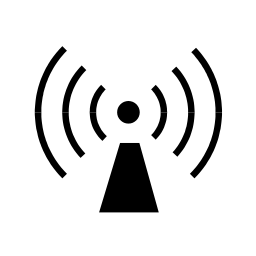I. REQUIREMENTS AND INTRODUCTIONS
A. Indications for Use:
The Night Shift is indicated for prescription for the treatment of positional obstructive sleep apnea with a non-supine apnea-hypopnea index <20, and to reduce or alleviate snoring. It records position, movement, and sound so that positional changes in sleep quality and snoring can be assessed.
B. Safety
⚠ Warnings: Do not wear the device while it is being charged.
⚠ Cautions:
- Night Shift users should NOT:
- have Cardiac Arrhythmia corrected with an artificial pace-maker;
- have skin sensitivity or an open wound around their neck;
- have a neck size that is very small (less than 12 inches/30 cm) or a very large (greater than 22 inches/55 cm);
- sleep with their head in a near-upright position;
- or suffer from tics or tremors of the head.
- The Night Shift device generates localized magnetic fields (less than 0.02 mT) that must be kept at least 6 inches (15 cm) from an implanted medical device of the user or bed partner.
- You may initially feel more tired during the day if your sleep is disrupted while you learn to not sleep on your back.
- The measured signal will be influenced by a snoring bed partner.
- Do not wear the Night Shift upside down – the reported sleep time on your left and right sides will be reversed.
- Do not wear the strap too loose – position feedback will be inaccurate if the device is NOT on the center of your neck.
- Do not wear the strap too tight – the strap may become detached during the night.
- US Federal law restricts this device to sale by or on the order of a physician.
- Dispose of the device that includes a Lithium Polymer battery properly.
- To avoid damage not covered by warranty, keep the device dry and clean, and out of reach of children and pets.
- Selection of an appropriate pillow for non-supine sleep may reduce the occurrence of neck, shoulder, or back pain. Discontinue use of the device and contact your physician or the device manufacturer in case of any significant pain.
⚠ Disposal:
- Follow local ordinances and recycling instructions regarding disposal or recycling of the device and device components, including the battery. The battery might leak or explode if it is used or disposed of improperly. The device and sensor strip are classified under EWC code 16 02 10* as containing PCBs and must be disposed of properly. The battery is classified under EWC code 16 06 05 as a lithium-ion battery and must be disposed of properly. Follow third party device instructions for proper disposal methods.
Explanation of Symbols:
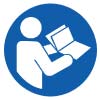 Refer to instruction manual/booklet |
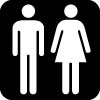 Adults only |
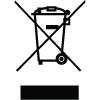 Dispose properly |
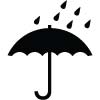 Keep Dry |
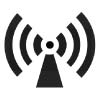 Non-ionizing electromagnetic radiation |
 Temperature limitation |
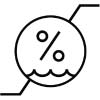 Humidity limitation |
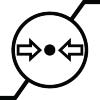 Atmospheric pressure limitation |
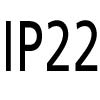 Limit objects, water ingress |
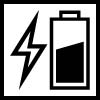 Charge between uses |
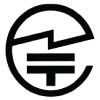 GITEKI (MIC) Mark |
 European conformity |
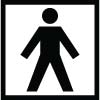 Type BF Applied Part |
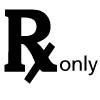 Prescription required in USA |
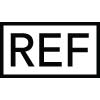 Catalogue/Model number |
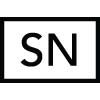 Serial number |
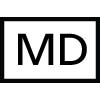 Medical device |
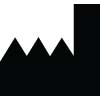 Manufactured by |
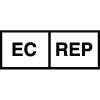 European authorized representative |
 Swiss representative |
C. Computer Requirements
Portal Software
• Operating System:
· Microsoft Windows 10+
· Mac computer (macOS 14+) – report generation only
· Mac computer (macOS 10.15 – macOS 13) – report generation, device settings changes, device date/time update
• USB 2.0 Port: 1
• Microsoft Visual C++ 2008 SP1 Redistribution Package. If needed, download from here: ttps://www.microsoft.com/en-us/download/details.aspx?id=26368
• USB read/write access
• PDF Viewer
App for Phone/Tablet:
• Operating System: iOS 14+ (iPhone X or newer) or Android 14+
• Internet Connection
II. NIGHT SHIFT EXPECTED SERVICE LIFE
The battery, haptic motors, neck strap, and chest belt are considered to be replaceable components and are expected to require replacement during the three-year service life of the NS device. The battery has an expected useful life of two years; the user can substantially compromise the useful life by continuously leaving the device on a charger for extended periods when the battery is fully charged. The user can detect when the battery must be replaced; when fully charged, the device is unable to acquire data for >10hours. The haptic motors have an expected service life of 30 hours of vibration. The neck strap and chest belt have an expected service life of 6 months when used every day. The expected service life is not a guarantee (see warranty information below).
III. NIGHT SHIFT WARRANTY
Night Shift includes a two-year warranty for assembly workmanship and electronic components, one-year warranty for haptic motors and battery, and six-month warranty for neck strap and chest belt. Warranty does not cover damage attributed to improper use by the customer. Night Shift is a medical device that is not water-proof, pet-proof, or mistake-proof. The warranty will be voided if an attempt is made to open the enclosure or change the battery. The neck strap / chest belt should be inspected regularly for signs of deterioration due to normal wear and tear. It is recommended that the neck strap / chest belt be replaced every six months.
See https://www.advancedbrainmonitoring.com/warranty for more information.
IV. DEVICE SPECIFICATIONS
|
System Specifications
|
|
| Device Model Numbers | NS27-1005 |
| NS27-1005.LE (wireless compatible) | |
| Sleep Position via accelerometers | Position accuracy 3° @ 30° C |
| Snoring Level | 20 – 80 dB |
| Power Supply | Internal 200mAH 3.7V Li-Ion battery |
| Battery Charging | Via USB cable |
| USB Port Type | Micro USB (Model NS27-1005) |
| USB-C (Model NS27-1005.LE) | |
| Recharging Time | Typical 2.5 hours |
| Operating Time | 0-5 days after charge : > 24* Hours of use 5-30 days after charge : > 18* Hours of use 30-180 days after charge : Turn on for charging *Assumes feedback for 5% of the operating time |
| Data Storage | Flash memory |
| File Size | 64 kB, up to 8 MB |
| User Control | ON/OFF |
| Indicator LED | Green and Amber Note: Device uses green and amber LED light indicators to indicate operational status. These indicators do not indicate hazardous situations or alert conditions and should not be taken as alarm indicators. |
| Device Enclosure Material | ABS |
| Neck Strap Material | Silicone |
| Chest Belt Material | Neoprene, Velcro, Aluminum |
| Dimensions | 2.25” long x 1.5” wide x 0.5” deep |
| Weight | 44 grams with strap and battery |
| Data Transfer rate via USB | 20 kB/sec and up |
|
Wireless Specifications (Model NS27-1005.LE only)
|
|
| Wireless Module | Laird/Ezurio BL652 |
| Operating Frequency | 2.4 to 2.48 GHz (ISM Band) |
| Antenna | On-board |
| Transmission Mode | Bi-Directional |
| Output Power | Maximum 4 dBm |
| Limitations of Operation | Maximum range 10 meters line of sight |
| Maximum 7 in-band wireless transmitters in vicinity using spectrum management | |
| Data Transfer rate via wireless | 5 kB/sec and up |
|
Software
|
|
| Portal – Compatibility | Windows 10+ Mac computer (macOS 14+) – report generation only Mac computer (macOS 10.15 – macOS 13) – report generation, device settings changes, device date/time update *Internet access and internet browser required |
| App – Compatibility | iOS 14+ (iPhone X or newer) or Android 10+ phone/tablet with internet access and BT 5.0+ |
|
General Compliance Information
|
|
| Equipment classification | Safety Standards: IEC 60601-1, CSA 601.1 UL 60601-1, EN 865, IEC 60601-1-2, 60601-1-11 |
| Type of protection | Class II, Internally powered by battery |
| Degree of protection against electrical shock | Type BF – Applied part |
| Mode of operation | Continuous |
| Degree of protection against ingress of water/liquids | IEC 60601-1, sub-clause 11.6 IP22 |
| Degree of Safety in presence of flammable mixtures | UL 60601-1 |
| Applied sensor label to indicate Type BF applied part | IEC 60601-1 Symbol 2 of Table DII of Appendix D |
| Attention Symbol, consult accompanying documentation | IEC 60601-1 Symbol 9 of Table DI of Appendix D, and 60601-1-11 |
| External case made with non-conductive plastic | IEC 60601-1, sub-clause 16(b) |
| Case mechanically strong | IEC 60601-1 and 60601-1-11 |
| Electromagnetic compatibility | IEC 60601-1, sub clause 17 IEC 60601-1-2, EN 303 446-1, EN 301 489-1, EN 301 489-17 |
| Electrostatic Discharge | IEC 60601-1-2, EN 61000-4-2 |
| Radio Frequency Electromagnetic Field Amplitude Modulated | IEC 60601-1-2, EN 61000-4-3 |
| Proximity Field from Wireless Transmitters | IEC 60601-1-2, EN 61000-4-3 |
| Power Frequency Magnetic Field | IEC 60601-1-2, EN 61000-4-8 |
|
Essential Performance
|
|
| The Night Shift device does not have any essential performance. | |
Accessories and Replacement Components
|
List of Accessories and Replacement Components for the Night Shift Device
|
|
| Neck Strap | The neck strap is a direct replacement accessory for the strap that is provided with each Night Shift device kit. |
| Chest Belt | The chest belt is an optional accessory that can be used instead of the neck strap to allow the user to wear the Night Shift device on the chest instead of the neck. |
| Haptic Motors | The haptic motors are device components that can only be replaced by the manufacturer or an authorized distributor. |
| Battery | The battery is a device component that can only be replaced by the manufacturer or an authorized distributor. |
Environmental Conditions and Limitations
| Environmental Limitations | Operation | Storage / Transportation* |
| Temperature / Relative Humidity | 5°C to 40°C (41°F to 104°F), relative humidity 15% to 90%, non-condensing and water vapor pressure up to 5kPa |
-25°C to 5°C (-13°F to 41°F), 5°C to 35°C (41°F to 95°F) with relative humidity up to 90%, non-condensing, >35°C to 70°C (95°F to 158°F) at water vapor pressure up to 5kPa |
| Atmospheric Pressure | 70 kPa to 106 kPa 20.6 in. Hg to 31.3 in. Hg |
70 kPa to 106 kPa 20.6 in. Hg to 31.3 in. Hg |
*If device is stored or transported at temperatures < 5°C (41°F) or > 40°C (104°F), the device must be kept at room temperature (20°C / 68°F) for a minimum of 6 hours, or until the device has reached safe operating temperatures (5°C to 40°C / 41°F to 104°F), prior to use.
Radio Equipment Information (Model NS27-1005.LE only)
This equipment has been tested and found to comply with the limits for a Class B digital device, pursuant to part 15 of the FCC rules. These limits are designed to provide reasonable protection against harmful interference in a residential installation. This equipment generates uses and can radiate radio frequency energy and, if not installed and used in accordance with the instructions, may cause harmful interference to radio communications. However, there is no guarantee that interference will not occur in a particular installation. If this equipment does cause harmful interference to radio or television reception, which can be determined by turning the equipment off and on, the user is encouraged to try to correct the interference by one or more of the following measures:
- Reorient or relocate the receiving antenna.
- Increase the separation between the equipment and receiver.
- Connect the equipment to an outlet on a circuit different from that to which the receiver is connected.
- Consult the dealer or an experienced radio/TV technician for help.
This device complies with part 15 of the FCC Rules. Operation is subject to the following two conditions: 1) This device may not cause harmful interference, and 2) this device must accept any interference received, including interference that may cause undesirable operation.
⚠ WARNING: Portable and mobile RF communications equipment including antennas can affect the operation of the Night Shift device. DO NOT use portable and mobile RF communications equipment closer than 12 inches (30 cm) to the Night Shift device. Other equipment, even if that other equipment complies with CISPR emission requirements, may interfere with the Night Shift device.
⚠ WARNING: The use of accessories and cables other than those provided by the manufacturer may result in increased emissions or decreased immunity of the Night Shift device.
| Guidance and manufacturer’s declaration – electromagnetic emissions | ||
| The Night Shift device is intended for use in the electromagnetic environment specified below. The customer or the user of the Night Shift device should assure that it is used in such an environment. | ||
| Emissions Test | Compliance | Electromagnetic environment – guidance |
| RF emissions CISPR 11 | Group 1 Class B | The Night Shift device uses RF energy only for its internal function. Therefore, its RF emissions are very low and are not likely to cause any interference in nearby electronic equipment. The Night Shift device is suitable for use in all establishments, including domestic establishments and those directly connected to the public low voltage power supply network that supplies buildings used for domestic purposes. |
| Harmonic Emissions IEC 61000-3-2 | Not Applicable | |
| Voltage fluctuations/flicker emissions IEC 61000-3-3 | Not applicable | |
| Guidance and manufacturer’s declaration – electromagnetic immunity | |||
| The Night Shift device is intended for use in the electromagnetic environment specified below. The customer or the user of the Night Shift device should assure that it is used in such an environment. | |||
| Immunity Test | IEC 60601 Test level | Compliance level | Electromagnetic environment – guidance |
| Electrostatic Discharge (ESD) IEC 61000-4-2 | 8 kV (±) Contact Discharge 2, 4, 8 and 15kV (±) Air Discharge | 8 kV (±) Contact Discharge 2, 4, 8 and 15kV (±) Air Discharge | Floors should be wood, concrete or ceramic tile. If floors are covered with synthetic material, the relative humidity should be at least 30 %. |
|
Radio Frequency Electromagnetic Field Amplitude Modulated IEC 61000-4-3 Proximity Fields from RF Wireless communications equipment IEC 61000-4-3 |
80 MHz to 2.7GHz 385 MHz: 27V/m @ 185Hz pulse modulation 450MHz: 28V/m @ FM modulation 710MHz, 745MHz, 780MHz: 9V/m @ 217Hz pulse modulation 810MHz, 870MHz, 930MHz: 28V/m @ 18Hz pulse modulation 1720MHz, 1845MHz, 1970MHz: 28V/m @ 217Hz pulse modulation 5240MHz, 5500MHz, 5785MHz: 9V/m @ 217Hz pulse modulation |
80 MHz to 2.7GHz 385 MHz: 27V/m @ 185Hz pulse modulation 450MHz: 28V/m @ FM modulation 710MHz, 745MHz, 780MHz: 9V/m @ 217Hz pulse modulation 810MHz, 870MHz, 930MHz: 28V/m @ 18Hz pulse modulation 1720MHz, 1845MHz, 1970MHz: 28V/m @ 217Hz pulse modulation 5240MHz, 5500MHz, 5785MHz: 9V/m @ 217Hz pulse modulation |
Portable and mobile RF communications equipment should be used no closer to any part of the Night Shift device, including cables, than the recommended separation distance calculated from the equation applicable to the frequency of the transmitter. Recommended separation distance d = 0.4 √P 80 MHz to 800 MHz where P is the maximum output power rating of the transmitter in watts (W) according to the transmitter manufacturer and d is the recommended separation distance in meters (m). Field strengths from fixed RF transmitters, as determined by an electromagnetic site survey,a should be less than the compliance level in each frequency range.b Interference may occur in the vicinity of equipment marked with the following symbol: |
| Electrical fast transient/burst IEC 61000-4-4 |
± 2 kV for power supply lines ± 1 kV for input/output lines |
Not Applicable | N/A |
| Surge IEC 61000-4-5 |
± 1 kV line(s) to line(s) ± 2 kV line(s) to earth |
Not Applicable | N/A |
| Conducted RF IEC 61000-4-6 |
3 Vrms 150 kHz to 80 MHz |
Not Applicable | N/A |
| Power frequency (50/60 Hz) magnetic field IEC 61000-4-8 |
30 A/m (Both 50Hz and 60Hz field) | 30 A/m (Both 50Hz and 60Hz field) | Power frequency magnetic fields should be at levels characteristic of a typical location in a typical commercial or hospital environment. |
| Voltage dips, short interruptions and voltage variations on power supply input lines IEC 61000-4-11 |
<5 % UT 40 % UT 70 % UT <5 % UT |
Not Applicable | N/A |
| NOTE UT is the a.c. mains voltage prior to application of the test level. | |||
| Recommended separation distances between portable and mobile RF communications equipment and the Night Shift device | |||
| The Night Shift device is intended for use in an electromagnetic environment in which radiated RF disturbances are controlled. The customer or the user of the Night Shift device can help prevent electromagnetic interference by maintaining a minimum distance between portable and mobile RF communications equipment (transmitters) and the Night Shift device. The minimum recommended distance is listed below, according to the maximum output power of the communications equipment. | |||
| Rated maximum output power of transmitter W |
Separation distance according to frequency of transmitter (meters) | ||
| 150 kHz to 80 MHz Not Applicable |
80 MHz to 800 MHz d = 0.4 √P |
80 MHz to 2.7 GHz d = 0.7 √P |
|
| 0.01 | Not Applicable | 0.04 | 0.07 |
| 0.1 | Not Applicable | 0.1 | 0.22 |
| 1 | Not Applicable | 0.35 | 0.70 |
| 10 | Not Applicable | 1.11 | 2.21 |
| 100 | Not Applicable | 3.5 | 7 |
| For transmitters rated at a maximum output power not listed above, the recommended separation distance d in meters (m) can be estimated using the equation applicable to the frequency of the transmitter, where P is the maximum output power rating of the transmitter in watts (W) according to the transmitter manufacturer. NOTE 1 At 80 MHz and 800 MHz, the separation distance for the higher frequency range applies. NOTE 2 These guidelines may not apply in all situations. Electromagnetic propagation is affected by absorption and reflection from structures, objects and people. |
|||
Device operation, primarily wireless communication, may be affected by strong electromagnetic fields created by wireless equipment (e.g. Wi-Fi, wireless and mobile phones – especially 5G, wireless chargers), office/household light sources, television and computer screens, electric radiators/heaters, hairdryers, microwave ovens and other kitchen appliances. Please allow at least 0.15 meter (0.5 feet) distance from such equipment for proper operation. Please allow at least 1 meter (3 feet) from such equipment for optimal operation.
V. NIGHT SHIFT TECHNICAL SUPPORT
If you have any additional questions, please contact the Night Shift Support team at http://nightshifttherapy.com/contact/ or by email at NightShift@advanced-sleep.com. Our Technical Support team is available on weekdays from 8-5PM (Pacific Time).
© 2021-2025 Advanced Brain Monitoring, Inc.

